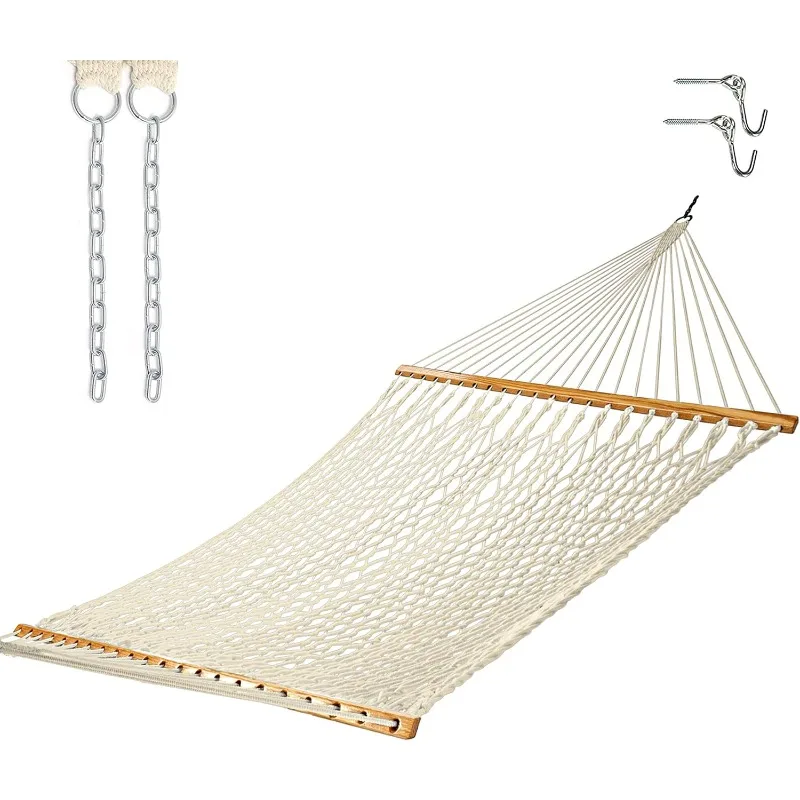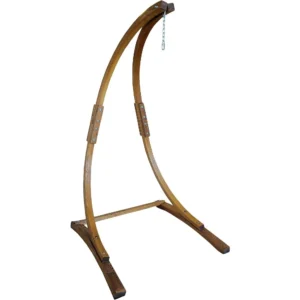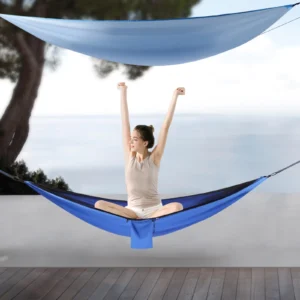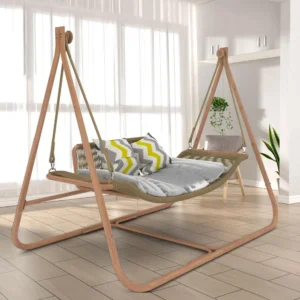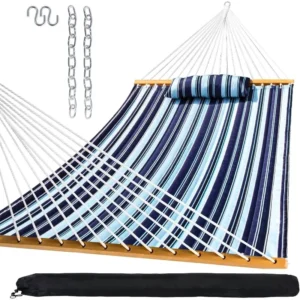Understanding What Makes a Hammock Truly Comfortable
When seeking the perfect hammock, comfort stands as the ultimate goal. But what exactly makes a hammock comfortable? True hammock comfort comes from a delicate balance of support and pressure distribution that creates a feeling of weightlessness while cradling your body in all the right places.
Several key factors contribute to creating this ideal relaxation experience:
- Material and fabric type: The texture against your skin, breathability, and how the fabric moves with your body
- Design and construction: How the hammock is built to support and distribute your weight
- Suspension method and hang angle: The way your hammock hangs dramatically affects weight distribution
- Size and dimensions: Proper length and width ensure you can achieve optimal positioning
- Additional comfort accessories: Pillows, underquilts, and other add-ons that enhance the basic hammock
What feels heavenly to one person might feel awkward to another. Your height, weight, sleeping position preferences, and even the climate where you’ll use your hammock all influence what will feel most comfortable to you.
While we’ll explore various hammock types in detail, it’s important to understand that there’s no single “most comfortable” hammock that works perfectly for everyone. The key is finding the hammock that best matches your specific comfort needs and deep seat hammocks lounging preferences.
The Crucial Role of Materials in Hammock Comfort
The material of your hammock fundamentally shapes your comfort experience. Each material offers unique benefits and potential drawbacks worth understanding before making your choice.
Cotton provides unmatched softness against the skin and excellent breathability, making it ideal for direct body contact. It naturally conforms to your body shape and gets softer with each use. However, cotton requires more maintenance, takes longer to dry, and can be susceptible to mold if left damp.
Polyester and nylon deliver outstanding weather resistance and durability. These synthetic materials dry quickly, resist UV damage, and typically support higher weight capacities. While traditionally not as soft as cotton, modern manufacturing techniques have significantly improved their feel against skin. Many cotton vs polyester hammock comparison tests show that high-quality synthetic materials now rival cotton for comfort while offering superior longevity.
Rope varieties (cotton, polyester, DuraCord) offer exceptional ventilation, making them perfect for hot climates. The open weave allows maximum airflow around your body. However, the rope texture can create pressure points, especially with thinner ropes or wide gaps. Many people add a pad or blanket to rope hammocks for extended comfort.
Quilted fabrics incorporate padding between layers of material, creating a cushioned surface that minimizes pressure points. These hammocks tend to be warmer, making them ideal for cooler environments but potentially too insulating for hot weather.
Specialty weaves found in Mayan and Nicaraguan hammocks feature intricate patterns that create a unique balance of support and flexibility. These hammocks expand horizontally when weight is applied, naturally conforming to your body’s contours.
The right material choice depends heavily on:
- Climate considerations: Breathable options for hot weather, insulating materials for cooler settings
- Skin sensitivity: Some materials may cause irritation for sensitive individuals
- Maintenance preferences: How much care you’re willing to provide
- Durability needs: Frequency of use and exposure to elements
For those prioritizing traditional comfort, our rope hammock sets offer classic design with modern durability enhancements.
Design Elements That Define Hammock Comfort
Beyond materials, a hammock’s design dramatically influences how it cradles and supports your body. Two fundamental design approaches create distinctly different comfort experiences.
Gathered-end vs. spreader bar designs represent the most significant design distinction:
- Gathered-end hammocks bunch fabric at each end, creating a natural cocoon effect. This design:
- Distributes weight evenly across your body
- Naturally centers you in the hammock
- Provides a secure, enveloping feeling
Works with your body’s natural curvature
Spreader bar hammocks use wooden or metal bars to hold the hammock fabric open. This approach:
- Creates a flatter, more bed-like surface
- Allows easier entry and exit
- Provides better visibility of surroundings
- Can be less stable for beginners (tendency to flip)
The difference between deep hammock vs standard hammock designs significantly affects how weight distributes across the fabric and how your body is positioned during use.
Size dimensions play a crucial role in comfort:
- Width determines how much fabric cradles your body. Narrower hammocks can create a “shoulder squeeze” effect, while wider models allow for diagonal positioning that flattens your lay.
- Length needs to accommodate your height plus at least 2-3 feet to achieve proper sag. Taller individuals need proportionally longer hammocks for optimal comfort.
- Single vs. double width refers to the hammock’s capacity. Double hammocks offer more fabric for a single person to spread out, even if you don’t plan to share.
Specialized design innovations have evolved to address specific comfort challenges:
- Asymmetrical designs create intentionally uneven shapes that better accommodate diagonal sleeping positions
- Integrated ridgelines maintain consistent sag regardless of how the hammock is hung
- Double-layer designs improve stability and allow for insulation between layers
Our spreader bar hammock sets feature carefully engineered designs that maximize stability while maintaining the classic open hammock feel.
The Science of Hammock Suspension: Finding the Perfect Hang
Even the highest quality hammock will feel uncomfortable if improperly hung. Mastering the basics of hammock suspension dramatically improves your comfort experience.
The ideal hammock hang angle is approximately 30 degrees from horizontal. This specific angle:
– Creates the optimal sag that allows your body to settle naturally
– Distributes pressure evenly across your back and legs
– Prevents excessive tension that can cause the fabric to dig into your skin
– Minimizes strain on your anchor points
Hanging height affects how easily you can enter and exit your hammock. The sweet spot is typically 18-24 inches from the ground at the lowest point when weighted. Too low makes standing up difficult, while too high creates a precarious entry and exit.
The distance between anchor points significantly impacts comfort. As a general rule, anchor points should be 2-3 feet further apart than your hammock’s total length. This extra distance creates the necessary slack for proper sag.
Common suspension mistakes that reduce comfort include:
– Hanging too tightly (creating a banana shape that forces your body into an uncomfortable curve)
– Uneven suspension heights (causing you to slide to one end)
– Insufficient distance between anchor points (creating excessive strain on the fabric)
A ridgeline—a cord running above the hammock between anchor points—helps maintain consistent sag regardless of how tightly you secure your suspension straps. This simple addition dramatically improves comfort consistency.
For those wanting hassle-free setup with perfect positioning every time, our a-frame stand hammock sets provide ideal height and width dimensions engineered specifically for optimal most comfortable hammock setup.
Brazilian Hammocks: Traditional Comfort Masters
Brazilian hammocks represent one of the oldest and most refined designs for pure lounging comfort. These traditional hammocks feature tightly woven cotton fabric without spreader bars, creating a deep pocket that envelops your body when you lie in it.
Comfort profile:
– The thick, soft cotton material feels gentle against skin and breathes well in moderate temperatures
– Deep traditional sag creates a natural cocoon effect that distributes weight evenly
– Body-conforming design eliminates pressure points by spreading weight across a larger surface area
– Fabric edges typically wrap around you, creating a secure, nestled feeling
Brazilian hammocks tend to be wider and shorter than many other styles. This dimensional choice creates more fabric to cradle your body while maintaining the characteristic deep sag. Most quality Brazilian hammocks measure 12-15 feet in total length with fabric width of 5-7 feet.
These hammocks excel at:
– Afternoon naps and leisure reading
– Creating a sense of security and coziness
– Accommodating various body types with their forgiving design
– Providing durability with their tight weave and sturdy construction
Brazilian hammocks best serve those who prioritize traditional comfort, don’t mind the enveloping feeling, and prefer natural materials. They’re less ideal for those who feel claustrophobic in wrapped positions or need maximum airflow in very hot climates.
Mayan and Nicaraguan Hammocks: The Breathable Body-Conformers
Mayan and Nicaraguan hammocks represent masterpieces of traditional weaving techniques combined with ergonomic design. Unlike their Brazilian cousins, these hammocks feature distinctive open-weave construction that creates a network of soft strings or cords.
Comfort attributes:
– The unique open-weave construction creates thousands of contact points that distribute weight with remarkable evenness
– Exceptional breathability makes these ideal for hot, humid climates where airflow is essential
– The lightweight feel provides a sensation of floating rather than sinking
– The hammock expands horizontally when weight is applied, creating a flatter surface than Brazilian styles
These hammocks traditionally come in vibrant colors and patterns, with Mayan versions typically featuring tighter weaves than Nicaraguan styles. Both expand significantly when weight is applied, requiring proper sizing for optimal comfort.
These hammocks perform best in:
– Hot weather environments where breathability is crucial
– Settings where aesthetic appeal is important
– Situations requiring a lightweight, packable option with traditional comfort
People with sensitive skin might find the string texture less comfortable against bare skin than solid fabric options, though the finest examples have incredibly soft weaves. Understanding the best material outdoor hammocks for your specific climate helps determine if these traditional designs will provide your ideal comfort level.
Camping Hammocks: Technical Comfort for the Outdoors
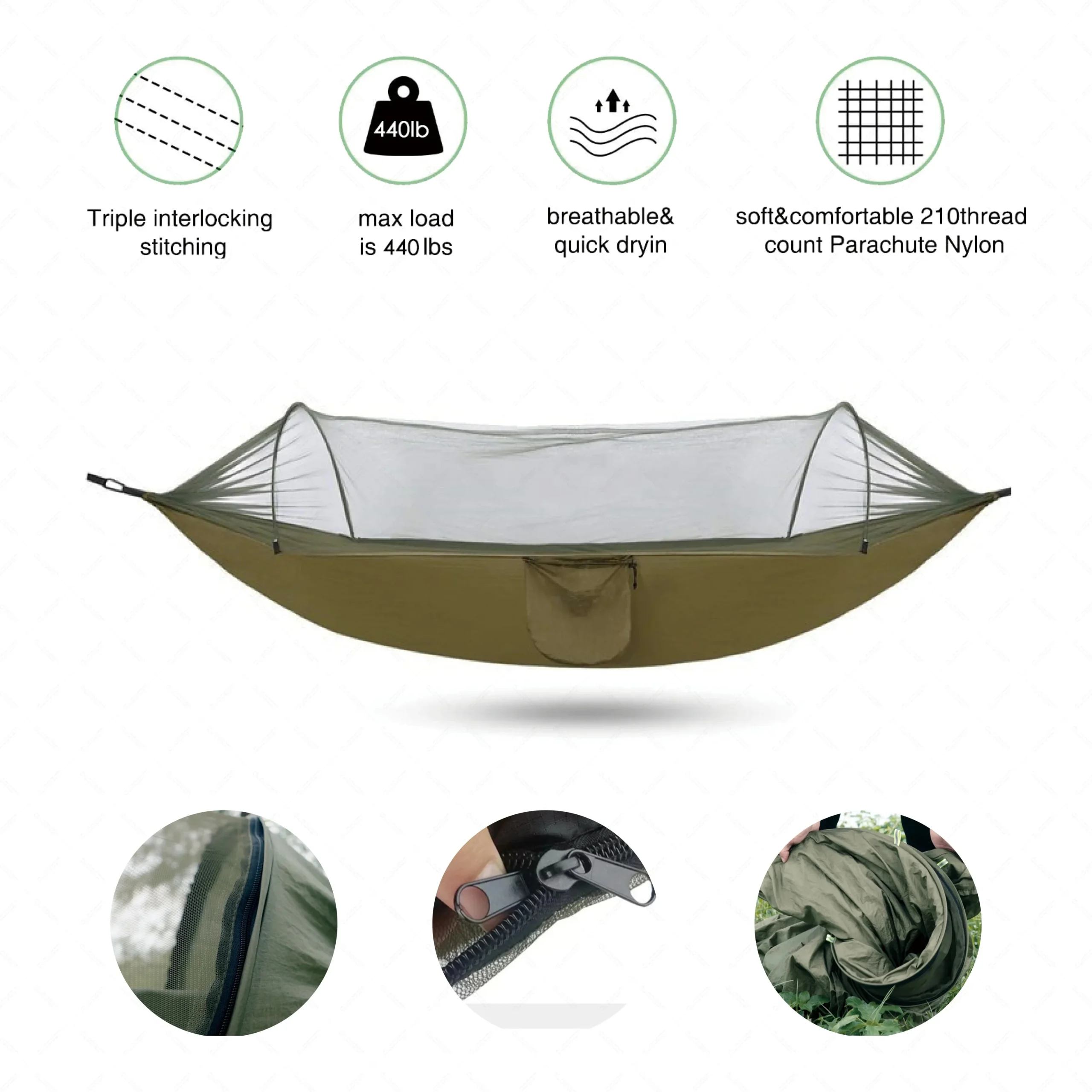
Modern camping hammocks blend traditional comfort principles with technical innovations for outdoor adventure. These lightweight, durable options have revolutionized wilderness comfort with specialized features designed for sleeping rather than just lounging.
Comfort characteristics:
– Lightweight technical fabrics balance durability with soft hand-feel
– Integrated features like bug nets and storage pockets enhance practical comfort
– Weather-resistant materials sacrifice some breathability but provide protection from elements
– Asymmetrical designs create flatter sleeping surfaces for side and back sleepers
– Adjustable suspension systems allow precise comfort tuning
Camping hammocks typically prioritize length over width to accommodate a variety of sleeping positions while maintaining packability. Double-layer designs offer increased stability and create a pocket for inserting insulation pads.
These technically advanced hammocks excel at:
– All-night sleeping comfort in outdoor environments
– Versatility across various weather conditions
– Quick setup and adjustment in the field
– Supporting different sleeping positions through specialized design
For outdoor enthusiasts seeking protection and comfort, our camping hammock sets with bug net provide integrated solutions that enhance relaxation while keeping insects at bay. Learning techniques for mastering deep seat hammock relaxation can help you maximize comfort in these technical designs.
Spreader Bar Hammocks: Open and Accessible Comfort
Spreader bar hammocks represent the most recognizable style in North American backyards and resorts. These hammocks use wooden or metal bars at each end to stretch the fabric flat, creating a distinctly different comfort experience from gathered-end designs.
Comfort attributes:
– The flatter, more bed-like sleeping surface appeals to those who dislike the wrapped feeling of traditional hammocks
– Easy entry and exit makes these accessible for all ages and mobility levels
– The open design provides unrestricted views of surroundings
– The stretched fabric eliminates the learning curve of finding the “sweet spot”
However, this design introduces some comfort challenges:
– Less stable center of gravity increases the tendency to tip
– Stretched fabric can create pressure points without proper padding
– Less natural body contouring than gathered-end designs
– More sensitivity to proper suspension for comfort
Spreader bar hammocks come in two main varieties: rope and quilted. Rope versions provide superior ventilation, while quilted versions like our quilted fabric hammock sets offer enhanced padding and comfort for extended lounging sessions.
These hammocks best serve:
– Those who prefer a flatter lying surface
– People who prioritize easy entry and exit
– Users who want to see their surroundings while relaxing
– Settings where visual appeal of the hammock is important
Mastering the center balance point takes some practice, but once achieved, these hammocks provide a comfortable, stable platform for relaxation.
Bridge and Specialty Hammocks: Innovation for Maximum Comfort

Innovative hammock designs continue to evolve, addressing specific comfort challenges that traditional styles might present. These specialized designs often incorporate structural elements beyond simple fabric and suspension.
Bridge hammock designs represent one of the most significant innovations for sleep comfort:
– Structural spreader bars at both ends AND sides create a truly flat sleeping surface
– Body weight pulls against the side bars rather than causing the center to sag
– The flat bottom eliminates the need to lie diagonally for back comfort
– These designs specifically accommodate side sleepers better than traditional hammocks
This flatter lay comes with trade-offs of increased weight and complexity, but many users find the bed-like comfort worth these compromises.
Hammock chairs and swing designs offer seated comfort options:
– Upright seated positions with back support
– Space-saving designs for porches, patios or indoor use
– Swinging motion that many find soothing
– Easier entry and exit than horizontal hammocks
Our hammock chairs and stands provide versatile comfort solutions for spaces where traditional hammocks might not fit.
Multi-person hammocks feature reinforced designs and expanded dimensions to safely accommodate two or more users. These specialized hammocks distribute weight differently than single-person designs, with reinforced stitching and higher weight capacities.
Other comfort innovations include hammocks with built-in adjustable headrests, integrated shade canopies, and modular designs that convert between different positions. These specialized options demonstrate how hammock design continues to evolve with comfort as the primary focus.
Personal Factors: Matching Your Comfort Needs to the Right Hammock
Finding your perfect hammock requires understanding how your unique physical characteristics and preferences align with different hammock designs. This personalized approach ensures maximum comfort.
Body type significantly impacts hammock comfort:
– Height: Taller individuals need longer hammocks to prevent foot and head pressure. As a rule of thumb, your hammock should be at least 2 feet longer than your height.
– Weight: Heavier individuals benefit from denser weaves, stronger fabrics, and higher weight capacity ratings to prevent excessive stretching and maintain proper support.
– Shoulder width: Broader shoulders require wider hammocks to prevent the fabric from compressing inward and creating a squeeze effect.
Sleep position preferences guide hammock selection:
– Back sleepers generally adapt most easily to traditional hammock designs
– Side sleepers typically prefer asymmetrical hammocks, bridge designs, or very wide hammocks that allow for a flatter diagonal position
– Stomach sleepers face the greatest challenge but may find comfort in ultra-flat bridge hammocks or spreader bar designs
Climate considerations significantly impact material choices:
– Hot environments demand breathable, moisture-wicking materials like open-weave cotton or technical synthetics
– Cold settings require insulation options like double-layer designs that accommodate underquilts
– Variable climates benefit from modular systems with adaptable components
Our collection of best deep hammocks ultimate relaxation options addresses diverse body types and comfort preferences.
Understanding whether you can you sleep in hammock chair designs or need a traditional horizontal hammock depends on your sleeping habits and comfort requirements.
Remember that hammock adaptation takes time. Many users report an adjustment period of several nights before finding their optimal position and truly experiencing the comfort benefits hammocks can provide.
Dark Wood Hammock Sets, Porch Swing Chair Sets
$653.82 Select options This product has multiple variants. The options may be chosen on the product pageA-Frame Stand Hammock Sets, Swinging Hammock Chair Sets
$154.62 Select options This product has multiple variants. The options may be chosen on the product pageCamping Hammock Sets with Bug Net, Ultralight Camping Hammock Sets
$139.72 Select options This product has multiple variants. The options may be chosen on the product pageLight Wood Hammock Sets, Swinging Hammock Chair Sets
$1,359.35 Select options This product has multiple variants. The options may be chosen on the product pageClassic Wooden Stand Hammock Sets, Heavy Duty Hammock Sets
$1,061.68 Select options This product has multiple variants. The options may be chosen on the product page
Essential Accessories That Transform Hammock Comfort
Even the most comfortable hammock can be enhanced with carefully chosen accessories that address specific comfort challenges and extend usability across different conditions.
Underquilts and insulation solve the “cold butt syndrome” that occurs when your body weight compresses the hammock material against your back:
– These hang beneath your hammock, providing loft insulation without being compressed
– Different temperature ratings accommodate various climate conditions
– Some feature adjustable positioning to target specific cold spots
Pillows and head support can dramatically improve comfort:
– Specialized hammock pillows feature curved designs that work with the hammock’s natural shape
– Small inflatable options provide adjustable firmness while remaining lightweight
– Proper positioning at the neck rather than head often provides better support
Bug protection ensures comfort in insect-prone environments:
– Integrated nets create a complete barrier while maintaining visibility
– Separate systems offer versatility for conditions without insects
– Entry/exit design significantly impacts overall convenience
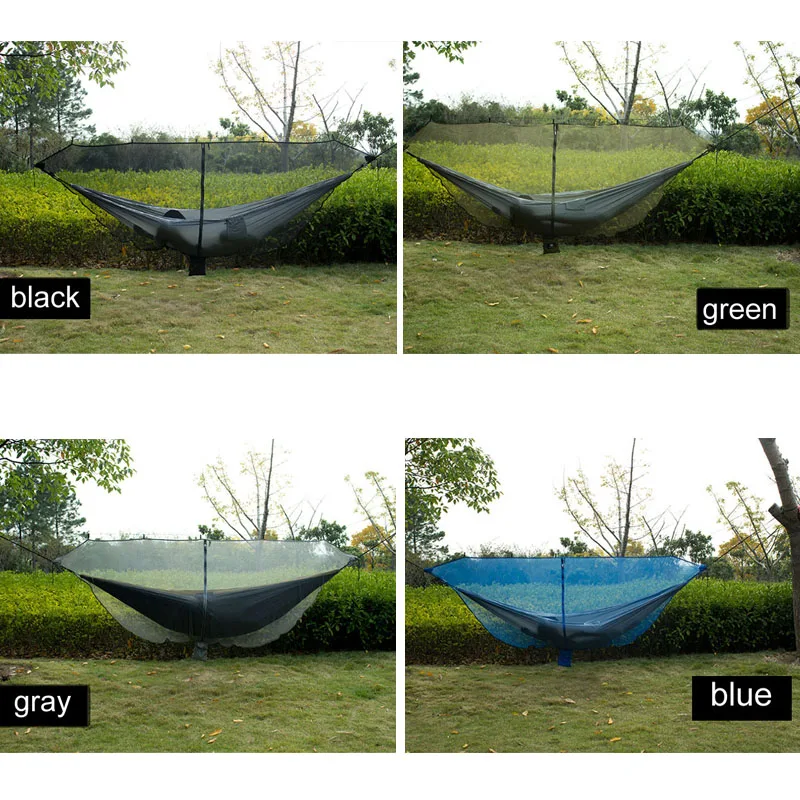
Ridgelines and structural enhancements maintain optimal sag and comfort:
– Fixed-length ridgelines ensure consistent hang angles regardless of anchor point distance
– Attachment points for accessories keep items within reach
– Some designs incorporate adjustable features to customize the hang angle
For adventures in changing conditions, our ultralight camping hammock sets include essential accessories while maintaining minimal packed weight.
Expert Techniques for Maximum Hammock Comfort
Mastering a few key techniques can transform any hammock from good to exceptional in terms of comfort. These expert approaches address the most common comfort challenges.
Perfect the diagonal lay: Position yourself at approximately a 30-degree angle across the hammock rather than directly down the center. This diagonal orientation:
– Creates a flatter lying surface naturally
– Reduces curve in your lower back
– Allows your shoulders and feet to spread out
– Works with the hammock’s natural geometryFind your ideal sag: Adjust suspension to create a deep enough curve (approximately 30 degrees from horizontal) that allows your body to settle naturally without feeling stretched or compressed.
Master proper entry technique: Sit in the center first, then slowly rotate your legs up while lowering your upper body. This controlled entry prevents tipping and helps find the sweet spot immediately.
Distribute weight evenly: Use your hands to spread the fabric beneath you, especially at pressure points like shoulders and hips. This simple adjustment can eliminate discomfort instantly.
Adjust to your specific body: Experiment with small changes in position, angle, and tension until you find what works for your unique body shape and preferences.
For comprehensive guidance on perfecting these techniques, our ultimate guide deep seat hammock provides detailed instructions and troubleshooting tips.
Many hammock users report that their comfort improves dramatically after several sessions as they learn these techniques and their body adapts to the unique support pattern hammocks provide.
Finding Your Perfect Hammock Match: Questions to Ask Before Buying
Before selecting your ideal hammock, consider these essential questions to match your specific needs with the right design:
Will you primarily lounge or sleep in your hammock?
Lounging for short periods allows more flexibility in design, while sleeping comfort requires more attention to support, insulation, and position options.
What climate will you most often use it in?
Hot environments demand breathable materials and designs, while cooler settings require insulation options and weather protection.
Do you have specific body pain or comfort concerns?
Back pain sufferers might benefit from designs allowing a flatter lay, while those with shoulder sensitivity might need wider hammocks that reduce compression.
Are you primarily a back, side, or stomach sleeper?
Your natural sleep position strongly influences which hammock designs will feel most comfortable for extended use.
How important is ease of entry/exit?
Those with mobility concerns might prioritize spreader bar designs or stands with optimal height for simpler access.
When possible, test different hammocks before purchasing. Many specialty outdoor retailers offer in-store displays where you can at least briefly experience different styles. Understanding specific deep seat hammock lounging features can help you evaluate options even without testing.
Remember that most hammocks have an adaptation period. The first few sessions might feel unusual as your body adjusts to this different support system. Give yourself time to learn proper positioning techniques before making final judgments on comfort.
Is There a Single “Most Comfortable” Hammock Type for Everyone?
The question that started our exploration—finding the single “most comfortable” hammock—ultimately has no universal answer. Comfort in hammocks is fundamentally personal and depends on your unique body, preferences, and intended use.
What makes hammocks special is their ability to be customized to individual comfort needs. The most comfortable hammock for you is one that matches your specific requirements for:
– Body support that works with your size and shape
– Position options that accommodate your sleeping habits
– Materials that feel pleasant against your skin
– Design features that address your specific comfort priorities
Rather than seeking the “best” hammock, focus on finding your perfect match by applying what you’ve learned about materials, designs, and proper setup techniques.
That said, certain versatile designs like Brazilian cotton hammocks and modern camping hammocks with asymmetrical designs tend to satisfy the broadest range of users with minimal adaptation required.
Do More Expensive Hammocks Guarantee Better Comfort?
The relationship between hammock price and comfort isn’t straightforward. While higher investment often correlates with comfort-enhancing features, even budget-friendly options can provide excellent relaxation with proper setup.
Higher prices typically reflect:
– Premium materials that feel better against skin and last longer
– More sophisticated designs with attention to ergonomic details
– Additional features that enhance versatility across different conditions
– Included accessories that would otherwise be separate purchases
However, many affordable hammocks deliver exceptional comfort when:
– Properly sized for your body
– Hung with correct technique and appropriate sag
– Used with understanding of optimal positioning
– Matched appropriately to your intended use
The most worthwhile investments typically involve:
– Hammocks sized generously for your height and weight
– Quality suspension systems that allow precise adjustment
– Durable materials that maintain their comfort properties over time
– Design features specifically addressing your priority comfort needs
Rather than focusing solely on price, evaluate how well each option addresses your specific comfort requirements and usage scenarios.
Can Hammocks Be Comfortable for People with Back Pain?
Many people with certain types of back pain report significant relief from properly used hammocks. The key lies in understanding how hammock positioning affects spinal alignment and finding the right setup for your specific condition.
When properly hung and used with correct technique, hammocks can:
– Create zero-pressure resting positions that reduce compression on the spine
– Allow your back muscles to fully relax in a supported position
– Distribute weight evenly without creating pressure points
– Provide gentle stretching that may relieve tension
Critical factors for back pain sufferers include:
– Finding the proper perfect hammock depth lounging comfort that creates enough sag without excessive curve
– Mastering the diagonal lay technique to create a flatter sleeping surface
– Using adequate insulation to prevent muscle tension from cold
– Selecting wider hammocks that allow for position adjustments
It’s worth noting that hammocks aren’t suitable for all back conditions. Those with specific medical concerns should consult healthcare providers before replacing traditional sleeping surfaces with hammocks long-term.
How Do Hammock Stands Affect Overall Comfort?
Hammock stands provide consistent, reliable support without requiring trees or permanent mounting points. Their design significantly influences overall comfort in several important ways.
Compared to tree-hanging setups, quality stands offer:
– Consistent, repeatable positioning every time
– Precise height adjustment for optimal entry and exit
– Elimination of concerns about anchor point stability
– Greater flexibility in hammock placement
Key stand dimensions that impact comfort include:
– Overall length (must accommodate your hammock plus proper sag)
– Height adjustability (affects ease of entry/exit)
– Stability features (prevent unwanted movement)
– Base width (impacts overall stability and footprint)
Different stand styles pair better with specific hammock designs. Spreader bar hammocks typically require stands with fixed attachment points, while traditional gathered-end hammocks need stands with sufficient length for proper sag.
Our collection of hammocks and stands features combinations specifically engineered to work together for optimal comfort. These matched sets eliminate guesswork about compatibility and ensure proper dimensional relationships.
For indoor use, stands with smaller footprints and aesthetic design elements often take precedence, while outdoor stands typically prioritize stability and weather resistance. In either case, the stand should disappear from your awareness during use, supporting your comfort without calling attention to itself.

